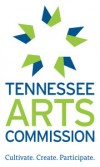Portraits of Famous People
Inspired by Red Grooms
The objective of this lesson is for students to gain an understanding of what a portrait is by creating their own original portrait of a famous person, and through an in-depth critique of several portraits by Red Grooms.
Materials:
Slides of works by Red Grooms, pencils, erasers, markers, magazine pictures of famous people and 12″X18″ paper – for more in depth study try to obtain the video Sunflower in a Hothouse, the book Ruckus Manhattan, and brochures of works by Red Grooms.
Procedure:
Set – Have any of you ever been to New York? Even if you haven’t, you probably have an idea of what New York looks like. Lets list some facts on the board. What about Elvis? What does he look like?
1. Show slides and discuss background.
2. Have students bring magazine pictures of famous people from home.
3. Draw the person’s portrait lightly in pencil onto the paper – You could use a grid to enlarge – pick out icons or symbols that you think represent this person and include these in their portrait.
4. Color the portrait with bright colors of markers or paint.
5. This lesson will take several class sessions. At the end of each lesson, collect work and review.
6. Closure: Review terms and historical information.
If possible, plan a trip to the Art Center to view the actual work with a greater understanding.
Evaluation of student work:
Teacher observation, participation, following of directions, neatness, completion, design are all good criteria.
Painting Places
Inspired by Red Grooms
The objective of the lesson is for students to gain an understanding of how an artist can tell a story about a place with a picture.
Materials:
Slides of works by Red Grooms, pencils, erasers, photographs of students hometown, 12″X18″ paper or larger – for more in depth study try to obtain the video Sunflower in a Hothouse, the book Ruckus Manhattan, and brochures of books that have other works by Red Grooms.
Procedure:
Set – Show students a slide of one of the No Gas series works and ask students if they know where this place is. Then ask them what clues tell them where this place is.
1. Show slides and discuss background.
2. Have students do a photo shoot of their hometown and bring these pictures in to work from. Remind them to include people from their town in their pictures.
3. Have students do three or four thumbnail sketches of their drawing first and choose the best to work from. They should draw their town and pick out things to include in their drawing that make their town special. For example, stores unique to your town, people unique to your town, crops unique to your town or think up your own.
4. Color your drawing with paint or marker.
5. This lesson will take several class sessions. At the end of each lesson, collect work and review.
6. Closure: Review terms and historical information.
Evaluation of student work:
Teacher observation, participation, following of directions, neatness, completion, design are all good criteria.
Art Concepts for discussion:
Overlapping to show visual depth and the use of one point perspective. For younger students, you might consider having squares and rectangles pre cut and have them do a collage of a city.
The Pop Culture and Red Grooms
The objective of the lesson is for students to gain an understanding of a style of art called Pop Art and determine what characteristics of Groom’s work might classify him as a Pop Artist.
Materials:
Slides of works by Red Grooms, pencils, erasers, cartoon images, paper and markers.
Procedure:
Set – Show students slides of works by Red Grooms and several more typical Pop Artists like Andy Worhol, Larry Rivers and Roy Lichtenstein. Discuss the similarities and differences.
1. Define Pop Art – A style of art developed in the 60’s that tried to portray the popular culture.
2. Have students choose a cartoon and crop and enlarge it onto a piece of paper.
3. Color with marker – show the dots of the newspaper like in Lichtenstein’s work.
4. This lesson may take several class sessions. At the end of each lesson, collect work and review.
Evaluation of student work:
Teacher observation, participation, following of directions, neatness, completion, and design are all good criteria.
Paper Sculptures
Inspired by Red Grooms
The objective of this lesson is for students to demonstrate an understanding of the word “Sculpto-Pictoramas” by creating their own original “Sculpto-Pictoramas” figures.
Materials:
Slides of works by Red Grooms, pencils, erasers, handouts, cardboard or thick posterboard or mat board scraps, scissors, material scraps.
Procedure:
Set – Has anyone ever heard of the word “Sculpto-Pictoramas”? Well, that is a term invented by the artist that we are going to study, Red Grooms. He invented the term to describe his large scale environmental works that he likens to a diorama. These works combine the styles of Pop Art and Expressionism. His Sculpto-pictoramas’ make use of a variety of media. The smaller scale pieces are made out of lithograph prints that have been folded into a 3d paper sculpture. The larger pieces combine board, paint and found materials.
1. Show slides and discuss background information.
2. Pass out handouts and board.
3. Have students cut their person and decide on what kind of personality they would like to portray. (A fireman, a bus driver, a mailman, a teacher, etc. )
4. Have material scraps and markers ready for students to decorate their people with. It is best to paint the figures and then decorate with material scraps. Regular glue will work, but with close supervision, a hot glue gun is great.
5. Students can also position their figures and glue their figures into position.
6. You could also place the figures in an environment. This can be made from posterboard, manila folders or show boxes.
7. Students can bring in objects to include in their environments. The environment should be painted.
8. This lesson will take several class sessions. At the end of each lesson, collect work and review.
Background information of Red Grooms
Born 1937, Nashville, TN
Red Grooms studied at Peabody College, New School of Social Research, Art Institute of Chicago, and Hans Hofmann School.
There is a sense of innocence in the work of Grooms that does not exist in the works of his contemporaries. He has been described as an “intruder in the hothouse of the minimalist painters of New York.”
Red Grooms grew up in Nashville, TN. While growing up, he was involved in art and in theater. He was especially interested in the workings of backstage. Grooms left Nashville at the age of 19 to make his home in New York City where he could “study” people. In the early sixties, he participated in “Happenings,” an experimental unrehearsed form of theater. These experiences had a major influence on the future of his visual art. One can see a steady progression from early collage works to a larger more three-dimensional format he entitled “Sculpto-Pictoramas”. Red describes his own hybrid brand of art as a natural evolution encompassing all the theatrical effects that his imagination demanded. He invented this terminology in 1971 while working on the ten foot high “Mr and Mrs Rembrandt,” now a part of the Cheekwood Museum of Art collection. (LeQuire)
When one looks at the style of Red, it is difficult to force him into a particular category. On impulse, many people classify his work as Pop art. However, the similarity lies not in the style, but rather in their preoccupation with the shaping power of the environment, as opposed to the workings of the mind. Most of the Pop artists zeroed in on one theme, where as Grooms’ work encompasses the total environment. On the other hand, many people classify his work as Expressionism. However, his environmentalist perspective on human nature is precisely what separates him from the Expressionist artists. To a degree, Grooms tried to reconcile Pop Art and Expressionism to create his own hybrid brand of art.
Definitions
- Pop Art
- a style of art developed in the 60’s that tried to portray the popular culture.
- Expressionism
- A style of art that focused on emotions as opposed to the subject. In works from this style, one sees the artists emotions through his brushstrokes, colors, etc.
- “Sculpto-Pictoramas”
- A style developed by Red Grooms that he likens to a diorama. It was influenced by set designs, and incorporates 3d environmental collage.
- Happenings
- A group of artists who tried to combine painting, sculpture and drama into a separate art form. It was an experimental, unrehearsed form of theater.
How to tell a painting’s story.
(This is Great to use with the No Gas Series, but it can also be applied to any work of art.)
1. Choose a painting or sculpture. Teacher will point out works that are appropriate for this activity.
2. Take about 15 minutes to get to know your painting. To do this, they should observe the work they’ve chosen and make a list of as many details describing its appearance as possible. Explain that they should limit their lists to physical aspects of the painting itself. For example, they might list “purple car, guitar, yellow suit, white house.” But they should avoid listing any emotions the painting evokes or any judgments they might have about the work.
3. Have the students write a description of their painting using the list of details they created in the previous step. Explain that they should describe their paintings in such a way that a person reading their description could easily find the work in the museum. Students should not try to list all of the details that they collected; instead, they must decide which ones would be most important to include in a description. Remind the students that for now they are to focus on what physically appears in the painting or sculpture.
4. Ask volunteers to read their descriptions aloud, and then have the listeners try to find the painting.
5. Have students evaluate their descriptions.
6. Give students time to write stories about their paintings. To help the students combine the visible aspects of art with the feelings and ideas art inspires, give them thirty minutes or more to write stories about their paintings. Explain that the students should use their descriptions of the paintings as a basis for creating their stories, but allow them to revisit the paintings if they want to. Tell the students that unlike their descriptions, the stories don’t have to stick to the physical facts. Any emotions or judgments the students wish to incorporate into their stories – and any way they wish to interpret what is happening in the painting – is fine. Students many wish to focus on what is currently happening in the painting. If they take this approach, it might be helpful to treat the painting as if it were a frozen frame in a movie. To set the painting into motion, they can mentally unfreeze the frame. Another approach might be to focus on what has just happened or what is going to happen. Explain, however, that no matter which approach they choose, they must not contradict any of the painting’s visible elements.
7. If possible, have students read their stories to the group in front of the paintings they wrote about.


